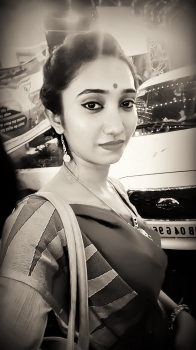Colors are essential to our being, as we correlate them easily with our different states of our mind. Interestingly, these correlations are more or less unanimously accepted. Each and every color is ascribed distinctive traits in the realms of positive and negative. In spite of our different backgrounds, we all come to an understanding with a mysterious like-mindedness on the manifestation of colors!
Significance of Colors in Art
If you try to discover about the core concept of colors, then you will realize that it lies in the effervescent spectrums of nature. Since time immemorial, individuals are simulated with these colors and have created paintings that are pleasing to senses.
Diversity in our cultures also led to adoption and depiction of different types of colors according to their own unique understanding. Simply put, I would say that one color had several proposition in different cultures and religions. Hinduism also attaches a certain implication to different colors and so do most of the India art online. Similarly, the vibrant and bright colors of Madhubani art Paintings divulge the emotional levels beyond the outlining.
Do you know that in Madhubani or Mithila Painting that belongs to Bihar is made from 100% eco-friendly objects and color hues? Amazing Fact! Moreover, different mediums that are used to create this form of artwork is basically taken from day to day life objects, such as twigs, brushes, fingers and matchsticks to color the pattern created by the artists.
The color hues are organic dyes, inks or pigments. Largely, rice paste is used to create these paintings and canvas is made up of either paper or fabric.
It is simply amazing how with the usage of vibrant colors, Madhubani paintings represent a wide range of events, dispositions, characters or monochrome patterns. Broadly speaking, the theme of these types of art forms basically comprises of not limited to the scenes from simple domestic chores, profligate celebrations; figures of mere mortals, flora and fauna, Divinities, Mother nature and floriated or geometric patterns. The color hues mainly used reflect positivity and high artistic values to perpetually delight the ingenious senses.
Reflection of Splendid Saga through Vibrant and Beautiful Colors-
The most prevalent Madhubani theme is the Garland ceremony of a Hindu wedding in front of a tree. This ceremony actually symbolizes the divine union of twso souls and continuity, the tree denotes in the painting usually reflects existence and liveliness.
If you try to buy art online India, you will find that more or less all possible color hues are used in these paintings. However, green is the color that you will find has been predominately used. Leaves and even the dresses of the bride and groom are represented in green color. Basically, green is the color of nature that signifies newness, wellbeing, harmony, rejuvenation, spring, abundance and good fortune. The other colors that grab the attention of the spectator are Red, Yellow, and Brown. Red stands for passion, supremacy, vigor, and forte; yellow symbolizes brightness, happiness, hopefulness, and faith; while brown is for earth, permanence, home, fortitude, and minimalism.
Ultimately, I would conclude by saying that buy Indian art online to decorate your home walls with such beautiful masterpieces.





















